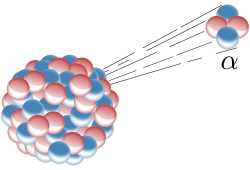You may know that when a current flows in a wire it causes a magnetic field. There is a field, magnetic or electromagnetic, which runs at distance from the direction of current. I'm being careful because, experimental history notwithstanding, it could be too simple to say that the field runs (anticlockwise) in a circle around the conductor. The earth has an electric and magnetic field which has an affect on all matter on the planet, in a maner we don't fully understand.
(Diag 1.) The field turns in the direction of the fingers, when the right hand is used, and the thumb points in the direction of the current. There will be a small field running at right angles (away) from the direction of current. The current has two components, and increasing current causes increasing resistance in the conductor (wire).
If we look at the opposing forces (like charges repel, unlike charges attract) we see that because they are electrons with a slightly increased voltage they enter an expanded state. Does the increase of voltage alter the structure or behaviour of the electrons attached to the atoms in the wire? Most probably.


Diag.1 Prediction of direction of field (B), given that the current I flows in the direction of the thumb.
n this.

Just as the balloon, filled with helium, displaces its own weight, becoming bouyant (creating an upward force), a mass attached to the balloon can 'average' the density of both to equal that of air.
In classical electromagnetism, Ampère's circuital law, discovered by André-Marie Ampère in 1826,[1] relates the integrated magnetic field around a closed loop to the electric current passing through the loop. James Clerk Maxwell derived it again using hydrodynamics in his 1861 paper On Physical Lines of Force and it is now one of the Maxwell equations, which form the basis of classical electromagnetism.
James Clerk Maxwell conceived of displacement current as a polarization current in the dielectric vortex sea, which he used to model the magnetic field hydrodynamically and mechanically.[9] He added this displacement current to Ampère's circuital law at equation (112) in his 1861 paper On Physical Lines of Force .[10]
What
tside it.
It relates magnetic fields to electric currents that produce them. Using Ampere's law, one can determine the magnetic field associated with a given current or current associated with a given magnetic field, providing there is no time changing electric field present. In its historically original form, Ampère's Circuital Law relates the magnetic field to its electric current source. The law can be written in two forms, the "integral form" and the "differential form". The forms are equivalent, and related by the Kelvin–Stokes theorem. It can also be written in terms of either the B or H magnetic fields. Again, the two forms are equivalent (see the "proof" section below).
Ampère's circuital law is now known to be a correct law of physics in a magnetostatic situation: The system is static except possibly for continuous steady currents within closed loops. In all other cases the law is incorrect unless Maxwell's correction is included (see below).